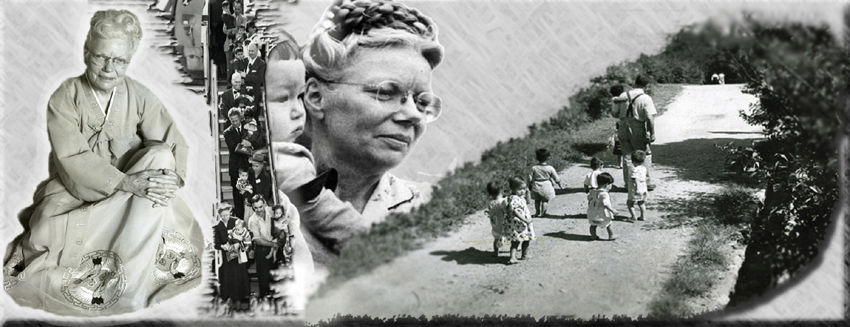
Holt Romania
FOUNDATION OF CONSULTANCY AND SOCIAL SERVICES FOR CHILDREN AND FAMILIES
 |
||
|
Harry & Bertha Holt
In the fall of 1954 Harry and Bertha Holt saw a documentary on children born of Korean mothers, whose fathers were UN soldiers. Because of their “mixed” blood these children were outcasts in the Korean society. Impressed with the images of malnourished children, Harry and Bertha Holt decided to adopt 8 Korean orphans. In May 1955 Harry left for Korea, while Bertha contacted the United States Congress. The Refugee Act of 1953 was limiting to 2 the number of children a family could adopt from abroad. Fearless and confident, Bertha gathered her friends to write letters to the Congress and in June 1955, only two months after she had started research, the United States Congress changed the Senate Law no 2312 with “releasing a number of Korean war orphans”. The new law allowed Harry and Bertha Holt to adopt and bring home to the States 8 Korean children. In October 1955 Harry brought home their 8 adopted children. This adoption generated a lot of interest at that time and in the first half of 1956 Harry and Bertha Holt started to take care of homeless children and to help families to adopt from Korea. After 1950 there were many people who thought that international adoption was a crazy “social experiment”. The social workers were saying: “ They are cute little babies and wonderful children, but what will happen to them when they grow up?” The first adopted children and their families opened the road to international adoption without benefiting of any previous information or experience. In the ‘50s the adoption procedures were generally hidden and obscure. But early adoptions from Korea revolutionized the problem of making people aware of them. These adoptions could not be hidden from the children and from society. Although some were suspicious about these international adoptions, the great majority of the public opinion admitted to the fundamental truth that Harry and Bertha Holt had brought up – namely that the love of a family can cross beyond any barriers related to nationality and culture and that adoption is not a badge of shame, but a sign of love. There is no previous history or map to follow, but this endeavor worked. It wasn’t easy, but many lessons were learnt on the go. And today international adoption is a unanimously accepted institution. Those “cute little babies and wonderful children” adopted in the first 20 years have grown up. They are now parents, grandparents, successful adults, and citizens of this world. In time the Holt program has developed and extended to other countries: Vietnam, Thailand, Philippines, Nicaragua, and India. Moreover, the programs have become more and more complex. The counseling provided to the biological parents has always been important and besides this service, Holt and its agencies have developed programs for the reintegration of children into their biological families and placement of children in adoptive families from their birth countries. More and more services were based on the “permanency” concept and all had the same goal: the children to have a permanent loving home. In the last years the programs have become focused on the idea of “family strengthening”, which means that families on the brink of separation were helped to stay together and become more united. Today, with the help of a competent management and with the innovation of partner agencies all over the world, the Holt Network has developed a wide range of services, each adapted to the specific needs of the families and children in the respective country. And yet, Holt International efforts have remained faithful to Harry Holt’s original philosophy: “Every child deserves a family of his own”. |
||